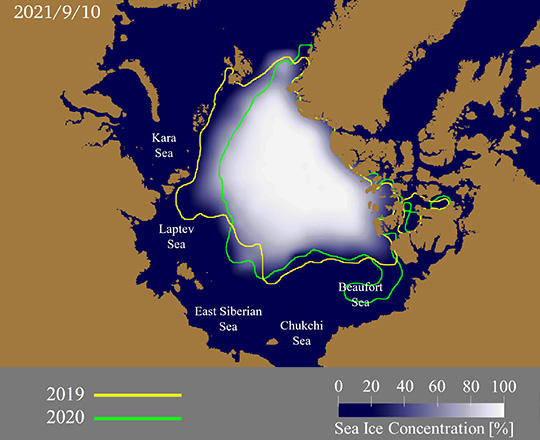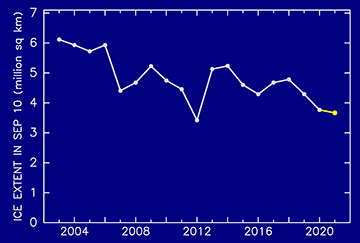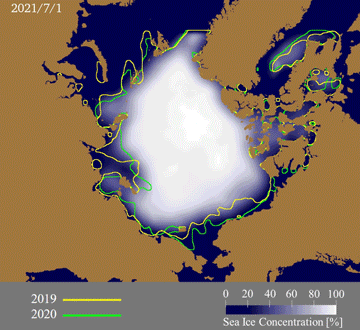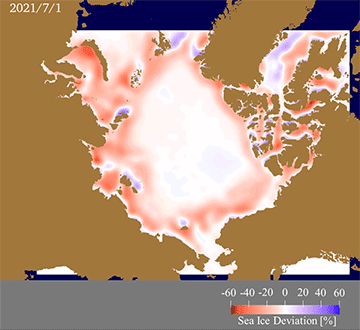2021 First report
Arctic Sea Ice Information Center, Noriaki KIMURA (Atmosphere and Ocean Research Institute, The University of Tokyo)

- Minimum ice extent will be about 3.67 million square kilometers in September, almost the same size as 2020.
- The Northern Sea Route will open around August 2, and the Canadian side except for Canadian archipelago will open around July 15.


Yellow and green lines indicate the ice edge of the same day for 2019 and 2020.

Summer Arctic sea ice extent has been declining in recent decades, and while the decline was less evident between 2013 and 2019, the ice cover in 2020 shrank to the second lowest extent after 2012. As Arctic sea ice extent is declining in 2019 and 2020, this year’s sea ice extent is predicted to be as small as that of 2020.
Russian side
Ice cover in the Russian side will retreat slower than in 2020, but faster than 2019. The Northern Sea Route will open around August 2, the same date as 2020.
Canadian side
Sea ice from the Chukchi Sea to the Beaufort Sea will retreat with the same timing as 2019. Sea routes of the Canadian side will open around July 15.
For this prediction, we used the sea ice data from satellite microwave sensors AMSR-E and AMSR2, and the relationship between the winter ice motion and summer ice concentration (Kimura et al., 2013). This forecast considers the long-term trend of sea ice concentration as well as the movement of sea ice during the winter, in the same manner as that of the last year’s work.
Ice prediction map is also available in Arctic Data Archive System (ADS) at National Institute of Polar Research.
If you have any questions about satellite monitoring of the Arctic Ocean, sea ice forecasting, or the forecasting methods used here, please contact the Arctic Sea Ice Information Center(sea_ice@nipr.ac.jp)
The sea ice forecast and its basic research were started in GRENE, continued to ArCS Project, and has been conducted in ArCS II Project since 2020.


